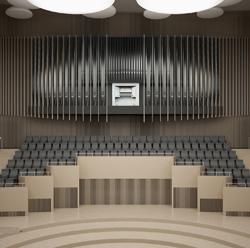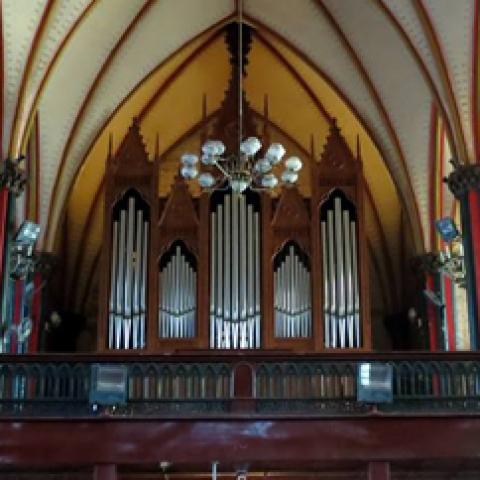
Casavant Frères, Limitée, has been commissioned to build a new mechanical-action organ for the Strait Cultural Arts Center, Fuzhou, China. The firm’s third installation in a Chinese concert hall, the four-manual organ will feature 52 ranks, to be completed this year. Also in 2017, Casavant will complete reinstallation of their 1958 organ in St. Mary’s Catholic Church, Newport, Rhode Island. The three-manual, 29-rank organ will experience some tonal revision and console updating, before being placed in new Gothic-style casework.
For information: www.casavant.ca.
Conceptual illustration of Fuzhou, China, organ (photo credit: Casavant and PES Architects)






